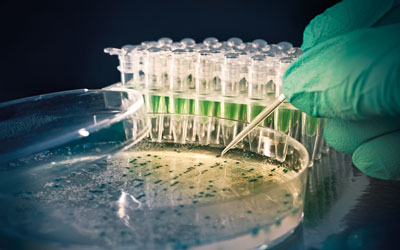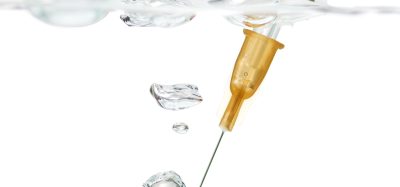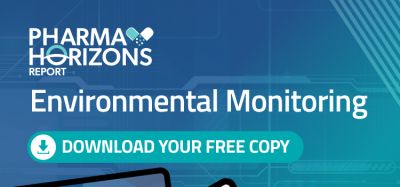Rapid sterility testing and the impact of recent changes to the US Code of Federal Regulations
Posted: 10 July 2012 |
This is the third paper in our continuing series on Rapid Microbiological Methods (RMM) that will appear in European Pharmaceutical Review during 2012. Rapid sterility testing is one of a number of applications that novel microbiological technologies afford the pharmaceutical industry. RMM technologies have already been validated and implemented for both small and large molecule pharmaceuticals and ophthalmic products, in addition to cell therapy and tissue culture products, as an alternative to pharmacopeial sterility tests, and company success stories have been presented and published at numerous professional meetings and in a variety of scientific journals (please see the reference page at http://rapidmicromethods.com for the full titles). However, the industry as a whole has not embraced the use of rapid sterility testing as much as other microbiological applications, such as in-process bioburden, environmental monitoring and Microbial Limits testing. The reasons are varied, and have included concerns regarding return on investment, the extent of the validation plan and regulatory acceptance. Fortunately, recent changes in regulatory policy make it clear that RMMs for finished product sterility testing have a place in our industry, and it is the FDA that is leading the motivation for change.
In February 2008, the FDA published their draft guidance on the validation of growth-based RMMs for sterility testing of cellular and gene therapy products. The guidance addressed considerations for method validation and determining equivalence of an RMM to sterility assays described in Title 21 Code of Federal Regulations (CFR), 610.12 (21 CFR 610.12).


This is the third paper in our continuing series on Rapid Microbiological Methods (RMM) that will appear in European Pharmaceutical Review during 2012. Rapid sterility testing is one of a number of applications that novel microbiological technologies afford the pharmaceutical industry. RMM technologies have already been validated and implemented for both small and large molecule pharmaceuticals and ophthalmic products, in addition to cell therapy and tissue culture products, as an alternative to pharmacopeial sterility tests, and company success stories have been presented and published at numerous professional meetings and in a variety of scientific journals (please see the reference page at http://rapidmicromethods.com for the full titles).
However, the industry as a whole has not embraced the use of rapid sterility testing as much as other microbiological applications, such as in-process bioburden, environmental monitoring and Microbial Limits testing. The reasons are varied, and have included concerns regarding return on investment, the extent of the validation plan and regulatory acceptance. Fortunately, recent changes in regulatory policy make it clear that RMMs for finished product sterility testing have a place in our industry, and it is the FDA that is leading the motivation for change.
In February 2008, the FDA published their draft guidance on the validation of growth-based RMMs for sterility testing of cellular and gene therapy products. The guidance addressed considerations for method validation and determining equivalence of an RMM to sterility assays described in Title 21 Code of Federal Regulations (CFR), 610.12 (21 CFR 610.12). Additionally, the guidance specifically applied to somatic cellular therapy and gene therapy products that are regulated within the Center for Biologics Evaluation and Research (CBER) or other products that are also subject to sterility testing under 21 CFR 610.12. However, the guidance was not intended for human cells, tissues, and cellular and tissue products (HCT/Ps), HCT/Ps which are regulated as medical devices under 21 CFR Part 820, or for other pharmaceutical products that would normally be regulated by the Center for Drug Evaluation and Research (CDER).
The FDA realised that many cell-based products couldn’t be cryopreserved or other – wise stored without affecting viability and potency. Additionally, most cell-based products are manufactured using aseptic manipulations because they cannot undergo sterile filtration or terminal sterilisation. Furthermore, rapid and effective testing was needed because many cellbased products have a potentially short dating period, which often necessitates administration of the final product to a patient before sterility test results are available. Because of the challenges associated with cell-based products, there was a significant need to develop, validate and implement sterility test methods that are more rapid than the sterility test methods described in 21 CFR 610.12.
For these reasons, the draft guidance provided direction on how to demonstrate that an alternative or rapid method is equivalent to a test method specified in 21 CFR Part 610, such as the sterility testing described in 21 CFR 610.12. It was also expected that an applicant demonstrate in a Biologics License Application (BLA) or supplement to a BLA that the alternative method will provide assurances of the safety, purity, potency and effectiveness of the biological product equal to or greater than the assurances provided by the specified method (21 CFR 610.9).
It is also important to note that the principles of RMM validation described in the draft guidance applied only to growthbased RMMs. Growth-based RMMs, like traditional methods of detecting viable microorganisms as described in 21 CFR 610.12, rely on the ability to recover and detect organisms from the product and demonstrate their viability by multiplication in liquid media. Therefore, the specific recommendations in this draft guidance document may not have been applicable for non-growth-based RMMs that detect micro biological surrogates, such as Adenosine Triphosphate (ATP) or nucleic acids. For these reasons, the guidance focused solely on RMMs that provided qualitative results (i.e., detection of microorganisms).
The guidance also stated that RMMs have the potential to replace the traditional methods for microbiological testing in the manufacturing process, including component (e.g., raw material, excipient) testing, in-process testing, drug substance testing and drug product in its final container.
Reliance on validated sterility testing methods is a critical element in assuring the safety of a product. Therefore, the draft guidance specified that proper validation of critical methods, including RMMs, demonstrate that the methods are suitable for their intended purpose and provides assurance that the results obtained are accurate and reproducible. Also included in the guidance was an overview of validation criteria that should be assessed, including limit of detection, specificity, ruggedness and robustness, what microorganisms to use, controls, and what method comparison studies to consider.
Proposed changes to the US Federal Register
In June 2011, CBER continued to progress their proposed usage of RMMs from the 2008 draft guidance and into the US CFR. In this proposal, the FDA recommended amending the sterility test requirements to provide manufacturers of biological products greater flexibility and to encourage use of the most appropriate and state-of-the-art test methods for assuring the safety of biological products. They took this action as part of FDA’s continuing effort to review and, as necessary, update the biologics regulations.
The proposed rule and its advantages were very similar to the 2008 draft guidance for industry: that manufacturers of innovative products, such as cell and gene therapy products, as well as manufacturers of currently approved products, may benefit from sterility test methods with rapid and advanced detection capabilities.
The proposed rule also stated that advances in technology (in recent years) have allowed the development of new sterility test methods that yield accurate and reliable test results in less time and with less operator intervention than the currently prescribed methods. Some examples of novel methods with the potential to detect viable con – taminating microorganisms that the FDA identified included ATP bio luminescence, chemiluminescence and carbon dioxide head space measurement. Therefore, the proposed rule was not limited to the use of growth-based RMMs, but was now promoting the potential to use non-growth-based RMMs as an alternative to the compendial sterility test.
To summarise, the FDA proposed to amend 21 CFR 610.12 to promote improvement and innovation in the development of sterility test methods, to address the challenges of novel products that may be introduced to the market in the future and to potentially enhance sterility testing of currently approved products. This proposed revision would provide manufacturers the flexibility to take advantage of modern methods as they become available, provided that these methods meet certain criteria.
With respect to validation, USP General Information Chapter <1223>, ‘Validation of Alternative Microbiological Methods’, was also referenced. Validation of a microbiological method is the process by which it is experi – mentally established that the performance characteristics of the method meet the requirements for the intended application. For sterility testing, this means that the test can consistently detect the presence of viable contaminating microorganisms.
FDA proposed to eliminate the prescribed sterility test methods found in 21 CFR 610.12 and instead allow the use of sterility test methods that are validated in accordance with established protocols to be capable of reliably detecting viable microorganisms that may be in the test sample. If an established USP compendial sterility test method is used, a manufacturer must verify that this established method is suitable for application to the specific product; however, FDA considered established USP compendial sterility test methods to already have been validated using an established validation protocol, so their accuracy, specificity, and reproducibility need not be re-established to fulfil the proposed validation requirement. In contrast, novel methods and any methods that deviate from the USP compendial sterility test methods would require a detailed validation. For example, when validating nonculture- based methods, the feasibility of identifying microorganisms from a contami – nated sample should be evaluated. And if a method does not have the capability to identify microorganisms to the species level, the validation protocol should require that an additional method for species identification be utilised for investigation of detected contaminants. Next, the test organisms selected should reflect organisms that could be found in the product, process or manufacturing environ – ment. Finally, the validation study design should contain the appropriate controls to evaluate the product sample’s potential to generate false positive and false negative results. Validation of the sterility test should be performed on all new products, and repeated whenever there are changes in the test method that could potentially inhibit or enhance detection of viable contaminating microorganisms.
One year later, the final rule is published
On 3 May 2012, the FDA amended the sterility test requirements for biological products in their Final Rule, ‘Amendments to Sterility Test Requirements for Biological Products’. With an effective date just a few weeks ago (4 June 2012), the rule revises the sterility requirements for most biological products under Title 21 of the CFR, subchapter F, parts 600 through 680 (21 CFR parts 600 through 680) and is intended to promote improvement and innovation in the development of sterility test methods by allowing manufacturers the flexibility needed for sterility testing of some novel products that may be introduced to the market, enhancing sterility testing of currently approved products, and encouraging manufacturers to utilise scientific and technological advances in sterility test methods as they become available.
Many changes have been put in place. For example, the Final Rule:
- eliminates specified sterility test methods, culture media formulae and culture media test requirements, such as incubation conditions (time and temperature) and visual examination requirements
- eliminates specified membrane filtration procedure requirements for certain products
- eliminates specified sterility test require – ments for most bulk material
- modifies the repeat sterility test require – ments, so that repeat tests will occur only once for each lot, if due to laboratory error or faulty materials
- replaces the sample size or amount requirement with a requirement that the sample be appropriate to the material being tested
- replaces the storage and maintenance requirements for cultures of test organisms used to determine the ‘growth-promoting qualities’ of culture media
- requires that the sterility test be appropriate to the material being tested such that the material does not interfere with or otherwise hinder the test
The Final Rule also provides very specific guidance when it comes to RMMs, especially as they relate to validation. For example, a novel method is required to be validated in accordance with an established protocol to demonstrate that the test is capable of consistently detecting the presence of viable microorganisms. Additionally, method validation is a well-recognised activity and can be performed without comparison to a ‘referee’ test method. Specifically, there is no single ‘referee’ test method that would work for all products and that some novel methods cannot be easily compared to culture-based methods such as USP Chapter <71> because these testing methods do not measure microbial growth.
The Final Rule also provides definitions and expectations for testing criteria that should be considered during validation:
- The Limit of Detection reflects the lowest number of microorganisms that can be detected by the method in a sample matrix. This is necessary to define what is considered contaminated
- Specificity is the ability of the test method to detect a range of organisms necessary for the method to be suitable for its intended use. This is demonstrated by challenging the sterility test with a panel of relevant organisms in the sample matrix
- Ruggedness is the degree of reproducibility of results obtained by analysis of the same sample under a variety of normal test conditions, such as different analysts, different instruments, and different reagent lots
- Robustness is the capacity of the test method to remain unaffected by small, but deliberate, variations in method parameters, such as changes in reagent concentration or incubation temperatures
Next, the Final Rule provides additional comment on the use of non-growth-based RMMs. For example, the feasibility of identifying microorganisms from a contaminated sample should be evaluated during validation. If a method does not have the capability to identify microorganisms to the species level, the validation protocol should require that an additional method for species identification be utilised for investigation of detected con taminants. Second, the validation study design should contain the appropriate controls to evaluate the product sample’s potential to generate false-positive and false negative results. Third, written procedures must include the composition of test components, test parameters, including the acceptance criteria and the controls used to verify the test method’s ability to consistently detect the presence of viable contaminating microorganisms. Finally, the volume of test material that results in a dilution of the product should not inhibit or otherwise hinder the detection of viable contaminating microorganisms.
Lastly, the Final Rule specifies that a manufacturer who desires to utilise an alternate sterility test method other than the one approved in its BLA must submit a BLA supplement in accordance with 21 CFR 601.12(b).
Summary
It is obvious that sweeping changes to the finished product sterility test for biologics have been put in place, and I applaud the FDA for thinking outside the box in providing guidance on novel microbiological technologies for this purpose. I am also encouraged with companies that manufacture the types of products, which are covered by the Final Rule, who have already validated and implemented RMMs as alternatives to the compendial sterility test. These changes will certainly encourage others in the industry to adopt rapid methods, not only for sterility testing, but also for all other microbiological applications that we are currently required to perform.
About the author
Dr. Michael J. Miller is an internationally recognised microbiologist and subject matter expert in pharmaceutical microbiology and the design, validation and implementation of rapid microbiological methods. He is currently the President of Microbiology Consultants, LLC (microbiologyconsultants.com). Over the course of approximately 25 years, he has held numerous R&D, manufacturing, quality, and consulting and business development leadership roles at Johnson & Johnson, Eli Lilly and Company, Bausch & Lomb, and Pharmaceutical Systems, Inc. In his current role, Dr. Miller consults with multinational companies in providing technical, quality and regulatory solutions in support of RMMs, sterile and non-sterile pharmaceutical manufacturing, contamination control, isolator technology, validation and microbiological PAT. He also provides comprehensive training for his clients in the areas of rapid method validation and implementation.
Dr. Miller has authored more than 100 technical publications and presentations in the areas of rapid microbiological methods, PAT, ophthalmics, disinfection and sterilisation, is the editor of PDA’s Encyclopedia of Rapid Microbiological Methods, and is the owner of rapidmicromethods.com, a website dedicated to the advancement of rapid methods. He currently serves on the editorial board for European Pharmaceutical Review, is co-chairing the revision of PDA Technical Report #33: Evaluation, Validation and Implementation of New Microbiological Testing Methods, and routinely provides RMM training programs for the industry and professional organisations worldwide.
Dr. Miller holds a PhD in Microbiology and Biochemistry from Georgia State University (GSU), a B.A. in Anthropology and Sociology from Hobart College, and is currently an adjunct professor at GSU. He was appointed the John Henry Hobart Fellow in Residence for Ethics and Social Justice, awarded PDA’s Distinguished Service Award and was named Microbiologist of the Year by the Institute of Validation Technology (IVT).
Issue
Related topics
Rapid Microbiological Methods (RMMs), rapid sterility testing







